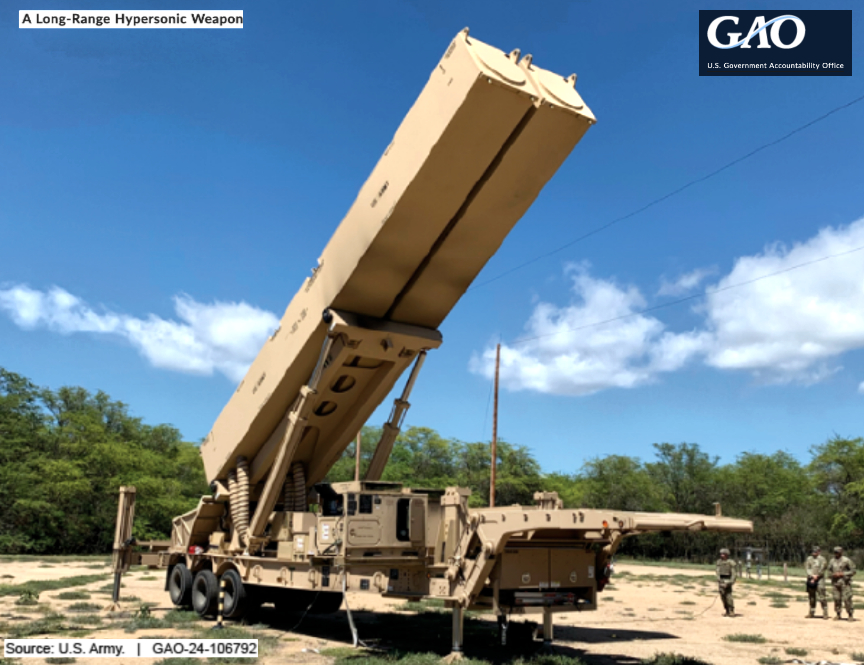
Why the Government Accountability Office (GAO) Did This Study
Offensive hypersonic weapons move at least five times the speed of sound and have unpredictable flight paths. The Department of Defense (DoD) has begun multiple efforts to develop offensive hypersonic weapons that can be launched on the ground, in the air, and at sea.
High costs and failed tests are a concern for some of these efforts. A joint explanatory statement includes a provision for GAO to review DoD’s efforts to develop offensive hypersonic weapons.
This report addresses the extent to which DoD’s hypersonic efforts are:
(1) employing leading practices for product development
(2) identifying and analyzing cost risks
(3) implementing effective enterprise risk management, among other objectives
GAO reviewed documentation for the six hypersonic efforts currently being developed by the Army, Air Force and Navy, and interviewed DoD officials. GAO assessed these efforts using its leading practices for product development, cost estimating, and risk management, as appropriate.
What GAO Recommends
GAO is making 10 recommendations to DOD, including increasing the incorporation of feedback from users into system designs, expanding the use of modern digital engineering tools, improving the Conventional Prompt Strike cost estimate, and expanding enterprise-level reporting activities. DOD concurred with these recommendations.
What the Government Accountability Office (GAO) found…
The Department of Defense (DoD) is increasingly investing in the development of hypersonic weapons. These weapons’ unique characteristics—such as the ability to maneuver at very high speeds—could allow the U.S. to strike heavily defended targets from a distance.
Comparison of Ballistic and Hypersonic Missile Trajectories
All six offensive hypersonic weapon efforts GAO identified have placed a high priority on delivering quickly, with all intending to deliver a “minimum viable product”—one with the initial capabilities needed for users to recognize value.

Four of the efforts, however, are not soliciting user feedback to determine what capabilities to include in their minimum viable product, a leading practice for product development identified by GAO in July 2023.
In addition, four efforts have not adopted leading practices for using digital engineering tools, another leading practice for product development. These tools include virtual representations of physical products. Employing modern digital engineering tools and directly soliciting user feedback both have the potential to speed up the design process, reduce costs, and develop a more usable product. While DoD has identified and analyzed cost risks, the cost of these weapons is difficult to estimate. This is in part due to DoD’s limited experience developing and fielding hypersonic weapons.
For example, the Navy’s estimate for Conventional Prompt Strike—among the most mature cost estimates available—compensates for the lack of quality historical data by relying heavily on the views of subject matter experts. Expert views are best used sparingly, as they can be prone to bias, unless estimators analyze and account for that bias.
Addressing this and other issues in accordance with GAO leading practices for cost estimates could provide Navy decision-makers a more accurate estimate. DoD implemented most elements of an effective risk management framework, which allows agencies to assess and monitor threats to achieving their goals. DoD is not, however, comprehensively reporting to Congress about progress against DOD-wide risks to fielding hypersonic systems. Reporting this information at an enterprise level provides a more complete picture of DoD’s efforts and progress, while promoting transparency.
To read all 10 GAO recommendations, please access this direct infolink…
